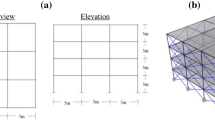Abstract
During the past 30 years, there has been spectacular growth in the use of risk analysis and risk management tools developed by engineers in the financial and insurance sectors. The insurance, the reinsurance, and the investment banking sectors have enthusiastically adopted loss estimation tools developed by engineers in developing their business strategies and for managing their financial risks. As a result, insurance/reinsurance strategy has evolved as a major risk mitigation tool in managing catastrophe risk at the individual, corporate, and government level. This is particularly true in developed countries such as US, Western Europe, and Japan. Unfortunately, it has not received the needed attention in developing countries, where such a strategy for risk management is most needed. Fortunately, in the last five years, there has been excellent focus in developing “InsurTech” tools to address the much needed “Insurance for the Masses”, especially for the Asian Markets.
In the earlier years of catastrophe model development, risk analysts were mainly concerned with risk reduction options through engineering strategies, and relatively little attention was given to financial and economic strategies. Such state-of-affairs still exists in many developing countries. The new developments in the science and technologies of loss estimation due to natural catastrophes have made it possible for financial sectors to model their business strategies such as peril and geographic diversification, premium calculations, reserve strategies, reinsurance contracts, and other underwriting tools. These developments have not only changed the way in which financial sectors assess and manage their risks, but have also changed the domain of opportunities for engineers and scientists.
This paper will address the issues related to developing insurance/reinsurance strategies to mitigate catastrophe risks and describe the role catastrophe risk insurance and reinsurance has played in managing financial risk due to natural catastrophes. Historical losses and the share of those losses covered by insurance will be presented. How such risk sharing can help the nation share the burden of losses between tax paying public, the “at risk” property owners, the insurers and the reinsurers will be discussed. The paper will summarize the tools that are used by the insurance and reinsurance companies for estimating their future losses due to catastrophic natural events. The paper will also show how the results of loss estimation technologies developed by engineers are communicated to the business flow of insurance/reinsurance companies. Finally, to make it possible to grow “Insurance for the Masses–IFM”, the role played by parametric insurance products and InsurTech tools will be discussed.
Similar content being viewed by others
References
American Re (2003), Topics: Annual Review of North American Natural Catastrophes, 2002
Centre for Economics and Business Research Ltd (2012), “Lloyd’s Global Underinsurance Report”.
Dong, W (2017), Private Communication. Risk Management Solutions, Inc.
Kreps R (1990), “Reinsurer Risk Loads from Marginal Surplus Requirements,” Proceedings of the Casualty Actuarial Society, LXXVII, 196–203
Kunreuther H and Roth RJ Jr (1998), Paying the Price–The Status and Role of Insurance Against Natural Disasters in the United States, National Academy of Sciences, Joseph Henry Press, Washington D. C.
Munich Re (2003), Topics: Natural Catastrophes 2002.
Munich Re (2017), “Topics Geo” 2017 Issue, NatCATSERVICE.
Panjer HH (1980), “The Aggregate Claims Distribution and Stop-Loss Reinsurance,” Proceedings of the Casualty Actuarial Society, XXXII, 523–545.
Roth RJ Jr. and Van TQ (1994), “California Earthquake Zoning and Probable Maximum Loss Estimation Program”, Calif. Dept. of Insurance, Los Angeles, CA 1993–1994.
Stojanovski P, Shah HC and Dong W (2013), “Bridging the Gap Between Earthquake Engineering and Insurance,” Paper presented at the SE-40EEE Skopje Conference, August 26–29, 2003, Skopje, Republic of Macedonia.
Author information
Authors and Affiliations
Corresponding author
Rights and permissions
About this article
Cite this article
Shah, H.C., Dong, W., Stojanovski, P. et al. Evolution of seismic risk management for insurance over the past 30 years. Earthq. Eng. Eng. Vib. 17, 11–18 (2018). https://doi.org/10.1007/s11803-018-0421-5
Received:
Accepted:
Published:
Issue Date:
DOI: https://doi.org/10.1007/s11803-018-0421-5




